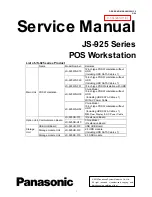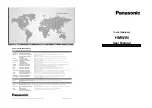
4. Configuration
86
Legend:
- The protocol remains active, in normal operation
- The protocol is disabled
CPU Event Queue
The CPU features an event queue of FIFO type (First In, First Out) which is used to buffer
temporarily the events related to communication points until they are transferred to their final
destination.
All events of communication points generated in the RTU are directed and stored in the CPU queue.
This queue presents the following characteristics:
Size: 4.500 events
Overflow policy: keeps the most recent events
This event queue is stored in a retentive memory area (non-volatile) solely designed for that purpose
and it does not occupy the area of retentive/persistent symbolic variables. Thus, the CPU queue
events that have not been transmitted to the control center, yet will not be lost in an eventual case of
RTU power off.
The queue is also redundant, that is, it is synchronized from cycle to cycle between the two CPUs
when using redundancy. More information can be found in the specific section about CPU
redundancy.
The input and output events in this queue follows a concept of producer / consumer. Producers are
those elements of the system capable of generate events, adding events in the CPU queue while
consumers are the elements of the system that receive and use these events, removing them from the
queue. Figure 4-10 describes this operation, including an example of some events
consumers/producers:
Figure 4-10. CPU Events Queue
















































